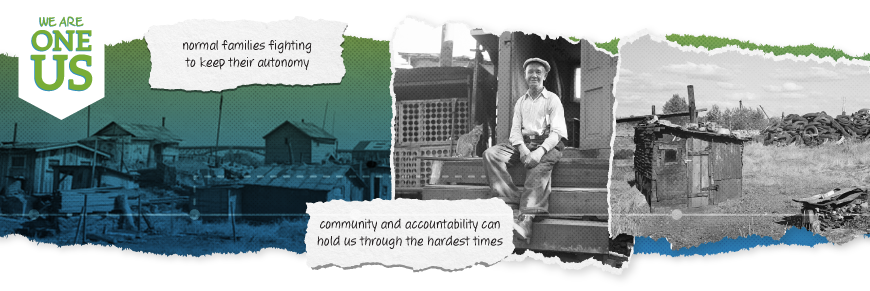
In 1930s Seattle, a city within the city was beginning to form. A patchwork of shacks and tents arranged itself near the docks and spanned over nine acres.
Each little makeshift home served as temporary housing for those left unemployed by the Great Depression. These neighborhoods created by and for the homeless started popping up in cities across the county, earning the spiteful name of Hoovervilles—named after President Herbert Hoover, who took office at the start of the Depression.
So many people suddenly became homeless that nearly every U.S. city had a Hooverville. But Seattle’s was the biggest, and the longest enduring.
-
The Great Depression, which decimated the American and global economies from 1929 to 1933, was a unique period of shared hardship in U.S. history that took years to recover from. The average annual income of an American family fell 40 percent. In just 1932, over 273,000 families were evicted from their homes. By 1934, nearly half of all mortgages were delinquent.
Prior to the Great Depression, those who experienced poverty and homelessness were generally single men who couldn’t find work in the rapidly growing urban centers. The homeless were the injured, sick or unlucky. They were the unfortunate men Alice Solenberger interviewed. They were on their own, and they took up little space in the public consciousness.
But the Depression’s widespread suffering meant homelessness and poverty weren’t in the shadows anymore. Soup kitchen lines wrapped around blocks and Hoovervilles took up public spaces. For the first time, a large percentage of the homeless population was made up of families.
The public had no choice but to acknowledge the plight of the homeless—and how they were simply normal families fighting to keep their autonomy.
-
Seattle’s newly homeless wanted nothing more than to maintain a sense of normalcy and freedom, despite their dire circumstances and complete lack of economic support. That’s why they built a temporary community.
According to Jesse Jackson, the self-proclaimed mayor of Seattle’s Hooverville, many of those who were left unemployed and homeless by the Depression were scared of becoming dependent on charities and loans and therefore losing their self-sufficiency. They accepted help when they needed it, but they generally chose to rely on the Hooverville community to assist each other and keep each other accountable.
Despite the growing public sympathy for homelessness and homeless families, local governments struggled with the idea of Hoovervilles as visible signs of pervasive poverty.
Hoovervilles were certainly not a permanent or beneficial phenomenon—they were unsanitary, impoverished, sometimes dangerous places. But through the Depression, they were the only living solution many could manage. They were not ideal, but they were communities where people could support each other and keep themselves out of complete dependency.
The crushing economic losses of the Great Depression pushed thousands of families into homelessness with no real way to escape. It was a dark time, but those who persevered through it show us how community and accountability is the formula to help individuals rise above their vulnerabilities.
Today, you can see how Hoovervilles have evolved into motels and other encampments. They have become rife with drug abuse and crime, and they are dangerous for the many families who live in them. While the homeless of today face new and different challenges that create a churn of dependency, we know there is hope. Solutions for Change offers community and accountability in a safe, clean environment where people can help each other overcome homelessness.
The Great Depression was a time quite different from our own, but it serves as an interesting case study for future solutions to homelessness. It shows us how many people truly care for the homeless but are unsure how to help. It shows us that the best ways to stay financially independent are community support and accountability. Solutions for Change takes this knowledge to build sustainable, actionable methods to pull people out of dependency.
To see Solutions changing lives in real time, visit our Overcomer blog series. In the next blog in this history series, we’ll take a look at another chapter in America’s relationship with homelessness—the rise of veteran homelessness.

